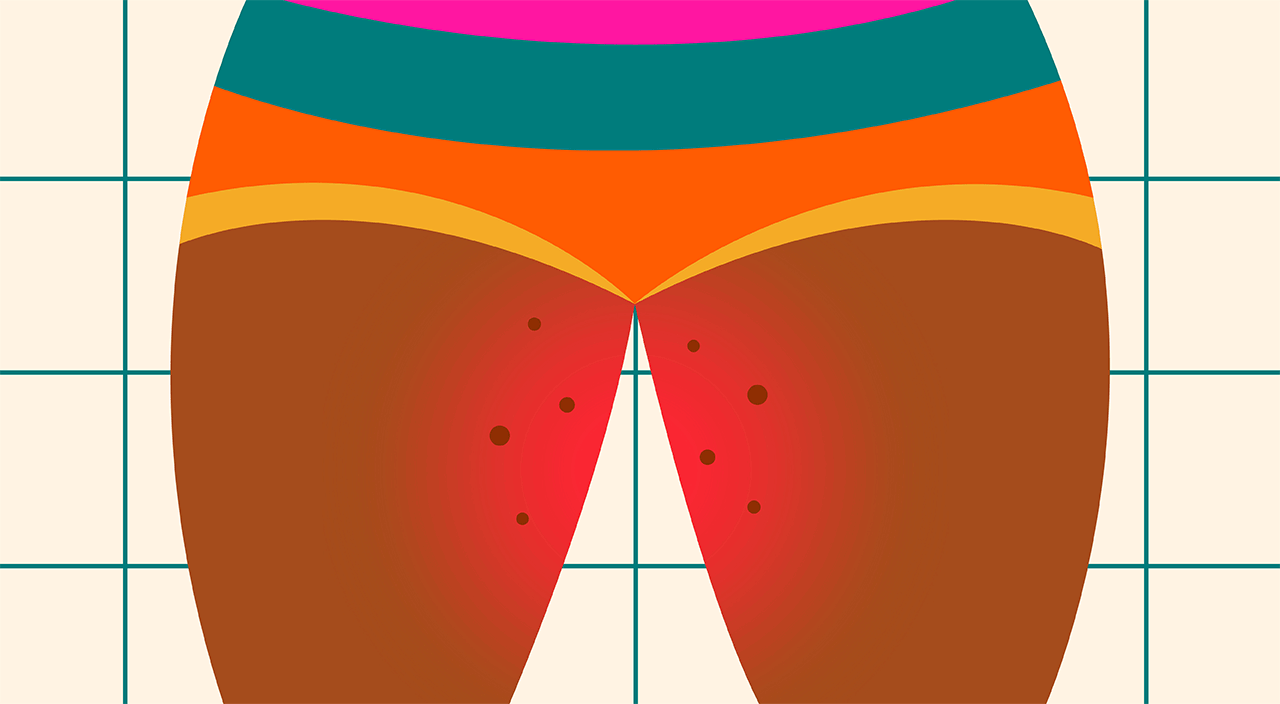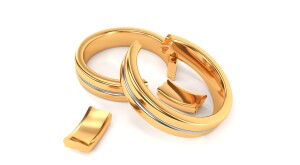Most of us have been there. Physical activity, gaining fat or muscle and having naturally “thick” thighs all impact our likelihood of experiencing frustrations like chafing, rubbing, bumps and hyperpigmentation in the inner thigh area. These are uncomfortable but manageable with a variety of simple approaches.
Common issues – and what to do about them
“Chafing, rubbing, pain, bumps and hyperpigmentation are all common problems on the thighs,” says Dina Strachan, M.D., a New York City board-certified dermatologist. Chafing (a.k.a. chub rub when caused by skin-on-skin friction), doesn’t discriminate based on age, gender, ethnicity or size. (Spoiler: It doesn’t necessarily discriminate between ratio of fat and muscle either – being the bane of many a bodybuilder!) But it can expose us to a host of other issues. Chafing, or what happens when your skin is irritated by skin-to-skin or skin-to-fabric contact, is a gateway issue that can be beyond frustrating.
Bumps
Dr. Strachan notes that there are many reasons our thighs rub together, from genetics to weight gain. She frequently sees patients who have patches of skin with small bumps that look like goosebumps and may be discolored. The scaly follicular papules, or keratosis pilaris, are especially common in people who are eczema prone. Sudden acne-like breakouts due to friction folliculitis, or an infected hair follicle, on the inner thighs is also common. The friction damages the follicle, allowing germs a way in.
These aren’t signs of more severe health concerns most of the time, and they often resolve on their own within a couple weeks. But Dr. Strachan says to see a dermatologist if you are in pain or seem to be getting boils, or bumps filled with puss that may eventually break, drain and then crust over. These lesions can cause permanent scarring, especially since darker-skinned people are more prone to hyperpigmentation, she says.
Darkened skin
Conditions such as these often result in what the American Academy of Dermatology Association calls post-inflammatory hyperpigmentation. The discoloration occurs when people, especially those of us with medium to dark skin, have an inflammatory response to a stressor that triggers our skin to produce extra melanin. The resulting spots and patches appear for various reasons, including hormonal shift, like pregnancy and menopause, in the aftermath of healing wounds or pimples, after a product irritates the skin or in response to certain medications.
Get instant relief – then progressive resolution
Dr. Strachan has suggestions for dealing with these common complaints. Many of them focus on reducing friction. But if you are carrying excess weight – and 4 out 5 sisters are – working on losing it slowly and sensibly over time can go a long way toward increasing your comfort. Since chub rub can interfere with workouts, targeting the troubling friction with barriers or lubricants can make it easier to hit the gym and get slim:
Lubricants
Petroleum jelly is one way to go. Pro: You’ve likely got it at home. Con: It can stain fabrics. Consider a silicone-based alternative formulated to leave no residue. A solid option is perfect for slipping into your gym bag.
Three products to try:
Body Glide, $5 and up, BodyGlide.com
Gold Bond Friction Defense Moisturizing Stick, $5 and up, GoldBond.com
Skin Slick continuous spray lubricant, $16, SBRsportsinc.com
Powders
These may help by reducing both moisture and friction. Avoid using products containing talc in the groin area, as the ingredient has been linked to cervical cancer.
Three products to try:
Megababe Dust Duo, $36, Megababebeauty.com
Monistat Care Chafing Relief Powder Gel, $9 Target.com
Pretty Frank Deodorizing Body Powder - Lavender, $17, Pretty-Frank.com
Biker shorts and tights
If you typically wear loose-fitting shorts or joggers to the gym, consider options that won’t bunch up or shift when you move. Moisture-wicking performance fabrics work well.
Three products to try:
Jockey Generation Wicking Slipshort, $14, Target.com
Thigh Society ‘The Original,’ $39, ThighSociety.com
Ahhh-llelujah ‘Fit to You’ Everyday Short, $36, Spanx.com
Underwear
While this underlayer may fit close to your skin, it can be helpful to keep your outer layers of clothing loose and breathable to minimize moisture buildup.
Three products to try:
Shortie Thigh Saver 4", $36, Knix.com
Woxer Baller, $22, Woxer.com
Wama Underwear Boy Shorts, $24, WamaUnderwear.com
Skin-tone correcting products
Check with your doctor about the best way to address hyperpigmentation. Prescription and over-the-counter skin lighteners often contain ingredients like hydroquinone, kojic acid, glycolic acid, vitamin C, licorice extract and tranexamic acid. Keep in mind, it isn’t safe to use hydroquinone without talking to a dermatologist first, as it may be a carcinogen and is often recommended for short-term use only. Home remedies such as coconut oil, lemon juice, oatmeal or yogurt are popular, but research on their efficacy is limited. Regular use of sunscreen can help prevent the discoloration from worsening or recurring.











